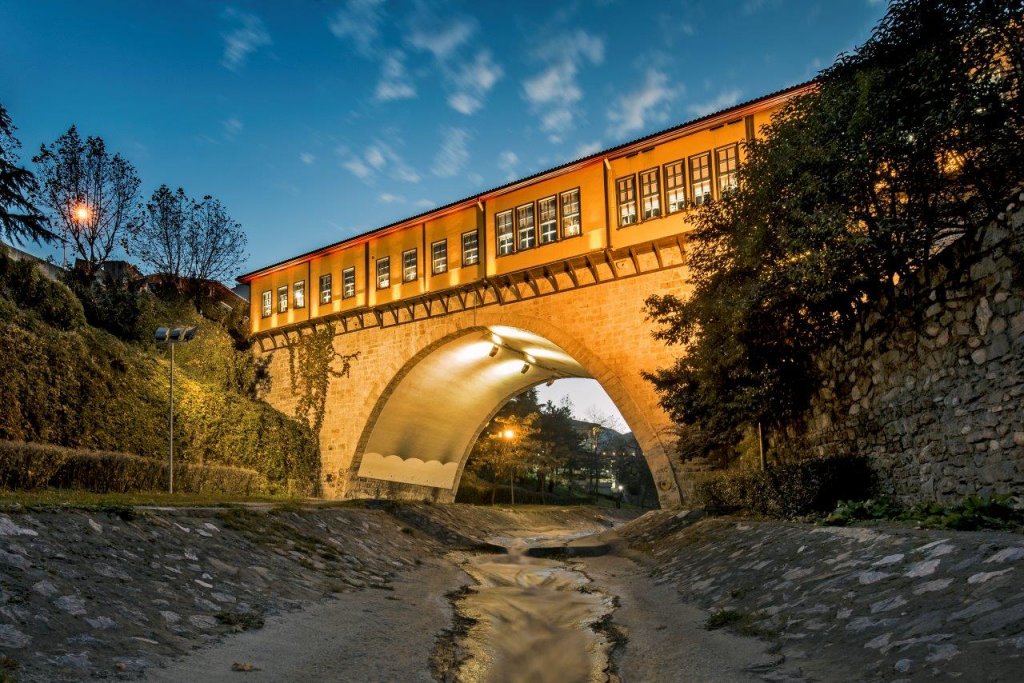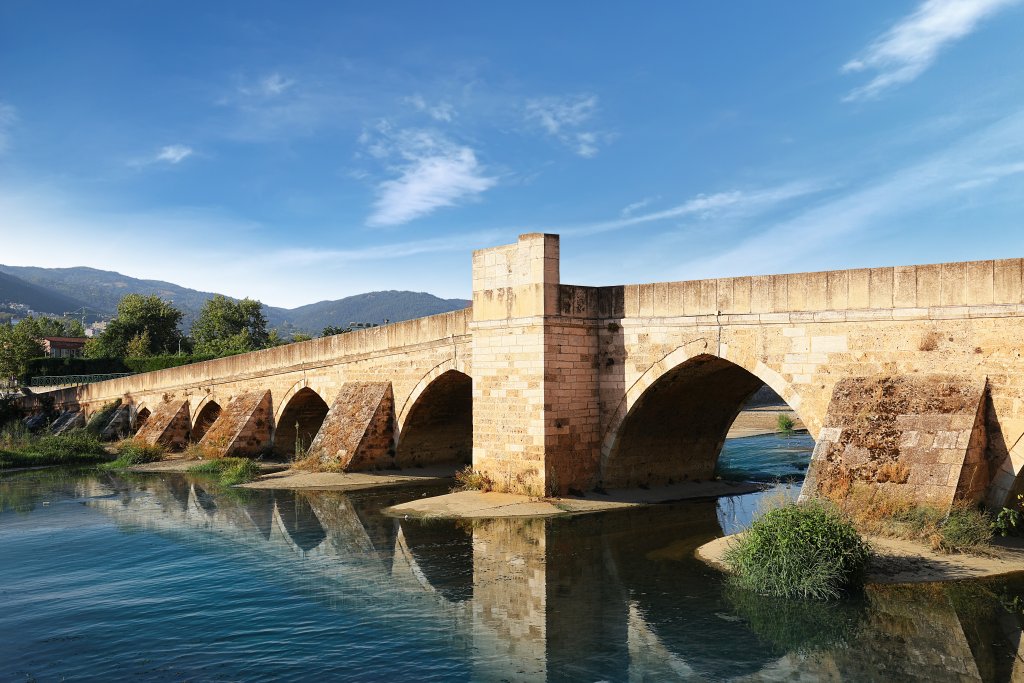FORMBACK
BRIDGES OF BURSA
 Setbasi Bridge
Setbasi Bridge
Setbaşı Bridge, located over Gökdere, connects Osmangazi and Yıldırım districts. It has two pointed arches, one small and one large. Although it is not known when it was built and who built it, it is known from the repairs reflected in the kadi registers that it has been used at least since the late 15th century and that it was repaired in 1565, 1585, 1680, 1681, 1738 and 1847. The bridge, which had a wooden deck until the Republican Period, was rebuilt with concrete decks on stone piers after 1920, and then the bridge was widened.
Irgandı Bridge
It was built in 1442, during the reign of Murad II, by Hodja Muslihuddin, son of Ali. Hodja Muslihuddin was an important merchant of the period who sold the silk he bought from Azerbaijan to Italian merchants. It is known that merchants also built buildings for trade purposes within the scope of the construction activities that played a role in the process of Bursa becoming an important trade center in the 15th century. Irgandı Bridge, with its arastasi on top and the stables and warehouses within the main structure of the bridge, is one of them. The architect of the bridge is known as Abdullah son Timurtaş.
It is one of the four bazaar bridges in the world, along with the Vecchio and Rialto Bridges in Italy and the Osma Bridge in Bulgaria.
It is the third of the bridges from top to bottom on Gökdere, which connects the city center to the east.
It is known that the bridge was masonry when it was first built, with 16 sections on each side, a total of 31 shops, 1 masjid, and warehouses and stables on its piers.
Today, the main structure of the bridge consists of an arch with a span of 16 meters and a width of 11 meters, and there are vaulted interior spaces on both sides of the arch. The 18 shops in the bazaar are built with a wooden frame system and extend towards Gökdere with bay windows supported by buttresses and some of them have warehouses underneath.
In the second half of the 19th century, Irgandı Bridge became an open-top bazaar with wooden shops lined up side by side. In 1922, when the occupation forces left Bursa, they bombed the bridge and destroyed it. In 1949, the bridge was rebuilt in reinforced concrete without a bazaar and in 2004 it was reconstructed and returned to its original form.

Boyacıkulluğu Bridge
The structure, which is one of the bridges built over Gökdere stream, was built by a merchant from Bursa named Hoca Sinan. The exact date of construction of the bridge is not known, but it is stated in the archive records that it was built before 1433.
The construction material of the two-legged and single-eyed (arched) bridge is rubble stone.
Setbaşı, Irgandı and Boyacıkulluğu bridges on Gökdere, which is one of the most important streams of Bursa and divides the city into two, form a whole on the river where they are located due to their construction techniques and locations.
It was repaired in 1848 and still connects the neighborhoods on both sides of Gökdere today.
Roman Bridge (Iznik)
The Roman Bridge, which is 30 meters long and 2.5 meters wide, located in the olive groves on the historical Silk Road, 10 kilometers away from Iznik district, has a history of 1500 years, built during the reign of the Eastern Roman Emperor Justinian I.
Abdal Bridge
Abdal Bridge, which is located within the borders of Osmangazi district today, is located on Nilüfer Stream between Acemler and Hürriyet neighborhoods. Started in 1666, the bridge was completed in three years. It is known that a merchant named Abdal Çelebi built the bridge. The middle part of the bridge, which consists of cut stone and pointed arches, is 75 cm. higher than the two heads. After 1978, it was restored and closed to vehicle traffic. The bridge piers have triangular prism shields protruding outward according to the direction of the water flow and support walls in the opposite direction. According to the 1906 Hüdavendigar Vilayeti (Bursa) Salnamesi, the bridge was built with 12 spans and its two ends are buried under the soil. The bridge is 64 meters long and 4. 75 meters wide.
Image and Content, source : Gotobursa






Leave a Reply